All products featured are independently chosen by us. However, SoundGuys may receive a commission on orders placed through its retail links. See our ethics statement.
Best bass headphones
March 31, 2025

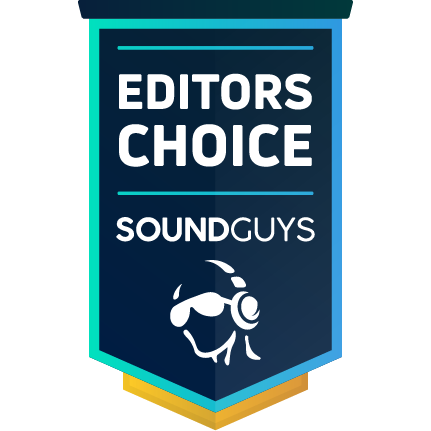
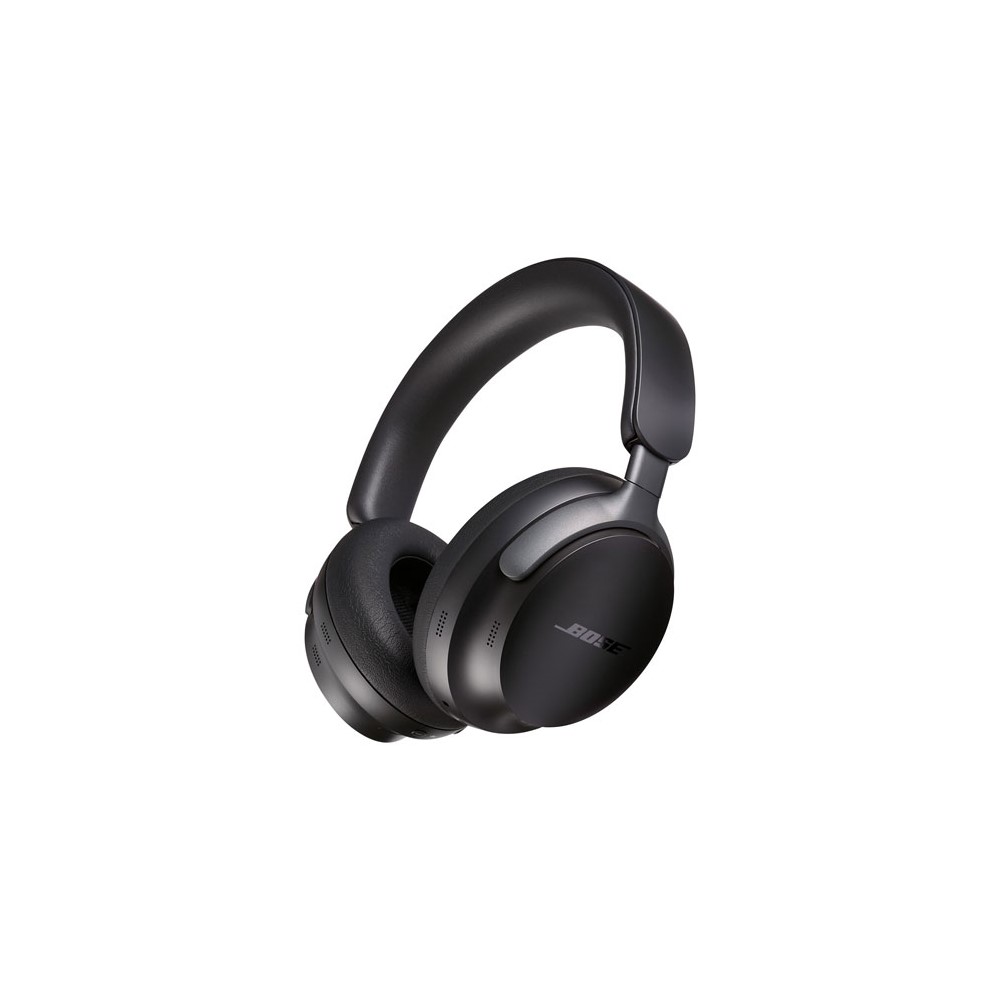




Take our quiz to find your best fit
Bass is one of the most divisive aspects of sound. Some people prefer to have headphones and speakers that give their music a little extra power in the low end, while others prefer more of a neutral sound. Loving one or the other doesn’t make you any more of a music lover than someone else, but it is crucial to your own personal enjoyment. Sound is a very personal experience, and whether you consider yourself an audiophile or a bass head, we hope this list of the best bass headphones will help you out.
- This list was updated on March 31, 2025, to add a new budget pick and update our frequency response measurement charts.
- This list was updated on December 19, 2024, to add context to the Sony WH-XB910N.
If you want a pair of fun headphones and just want to hear that thump from your music, this list of the best bass headphones is for you. We recommend any of these headphones to listeners who don’t care for analytical listening or who have a separate pair of headphones for such a purpose.
If you are a bass head, be sure to check out our list of the best bass earbuds, too!
The Sony WH-1000XM5 has well-balanced bass
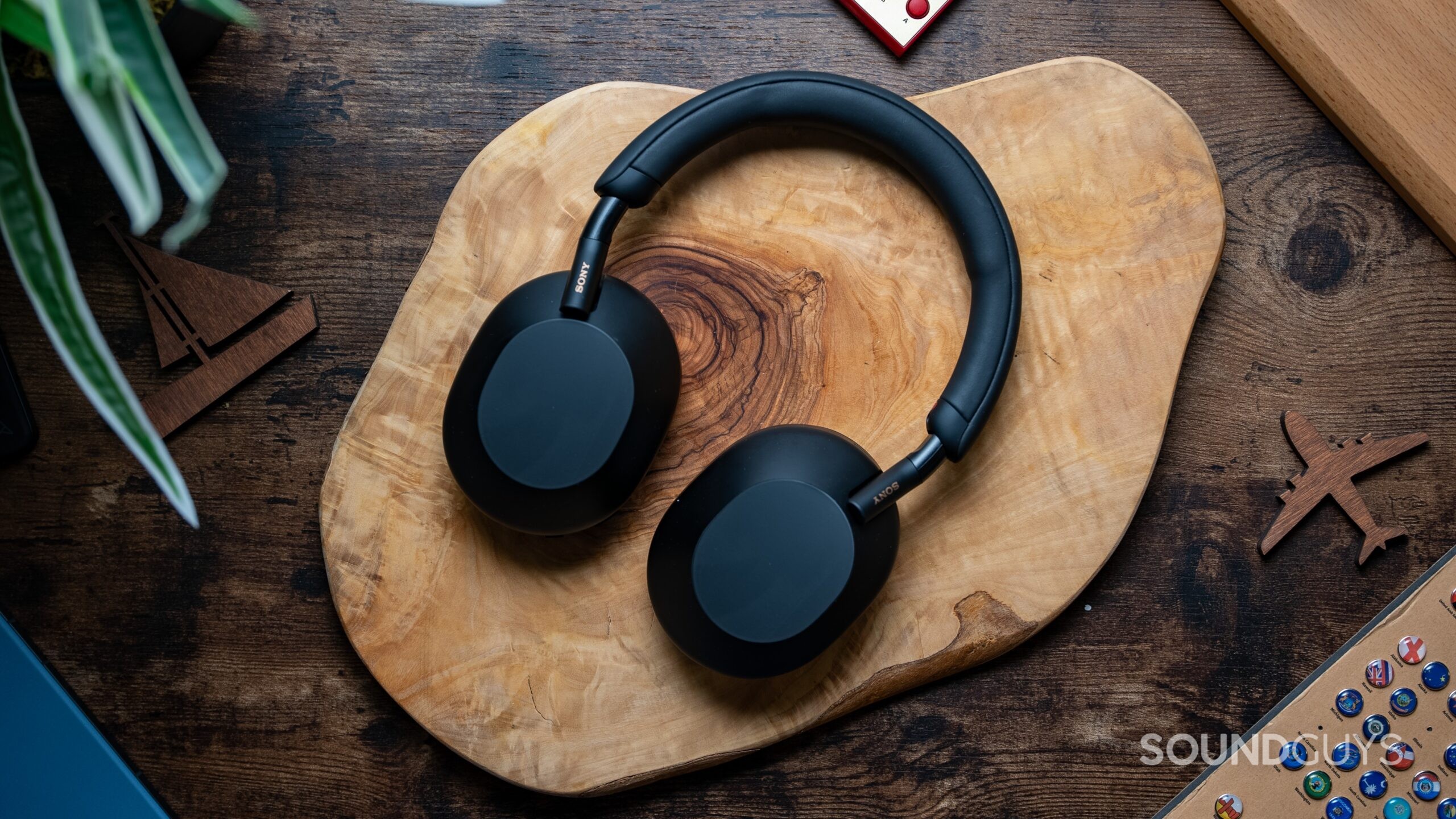
Sony makes plenty of bass-heavy headsets and even slaps its “XB” moniker onto a whole suite of headsets and speakers, so it may come as a surprise to see the Sony WH-1000XM5 listed as the best headphones for bass for most listeners. We recommend this headset for its tastefully amplified bass response that still lets higher frequencies come through. These are also a great choice for commuters thanks to the stellar active noise canceling (ANC) that outperforms the WH-1000XM4.
Loading chart ...
With Bluetooth 5.2, you can stream over the SBC, AAC, and LDAC Bluetooth codecs, and you can even plug in via the aux cable for lossless playback (no USB-C audio passthrough here). Battery life is very good, reaching 31 hours and 53 minutes with ANC on (according to our standardized testing). You can fast charge the WH-1000XM5 with the included USB-C cable: just three minutes of charge yields 180 minutes of playback.
While there’s a lot to love about the Sony WH-1000XM5, one thing we aren’t in love with is the price. If you want a feature-packed headset that’s comfortable for hours-long listening sessions and looks as great as it sounds, Sony’s flagship headset is a great pick.


The Bose QuietComfort Ultra Headphones are feature-forward
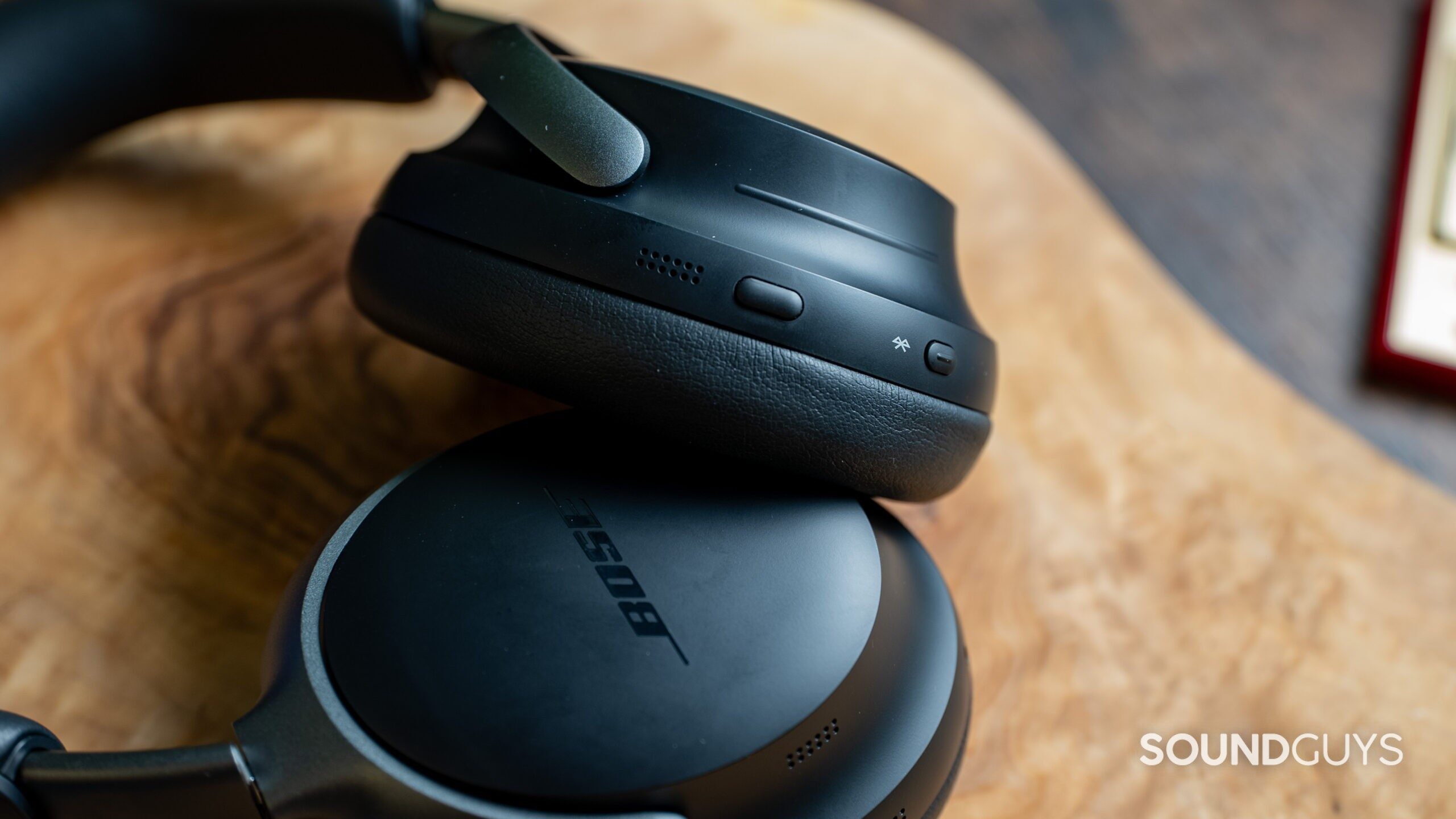
In the realm of bass-heavy headphones, the Bose QuietComfort Ultra Headphones make a strong case for themselves. These headphones cater to a specific segment of audiophiles who appreciate a robust low-end response. Still, they also offer the flexibility to tailor sound to individual preferences via the Bose Music app, including a Bass Boost EQ.
Loading chart ...
These headphones support aptX Lossless and Snapdragon Sound, offering a high-fidelity, wireless listening experience, although this is currently limited to newer Android devices. The CustomTune technology is another notable feature, adapting the headphones’ sound profile to the listener’s ear anatomy, ensuring all frequencies are delivered optimally.
The QuietComfort Ultra delivers a lightweight design, weighing just 253g, and soft, glasses-friendly padding for comfortable wear. The battery life is impressive, offering up to 27 hours and 37 minutes of continuous playback, with a fast-charging feature that provides 2.5 hours of listening time after just 15 minutes of charging. While these headphones are a significant investment, their combination of deep, customizable bass, cutting-edge wireless technology, and comfortable design make them a compelling choice for bass lovers looking for top-tier headphones.


The Sony ULT Wear will rattle your skull
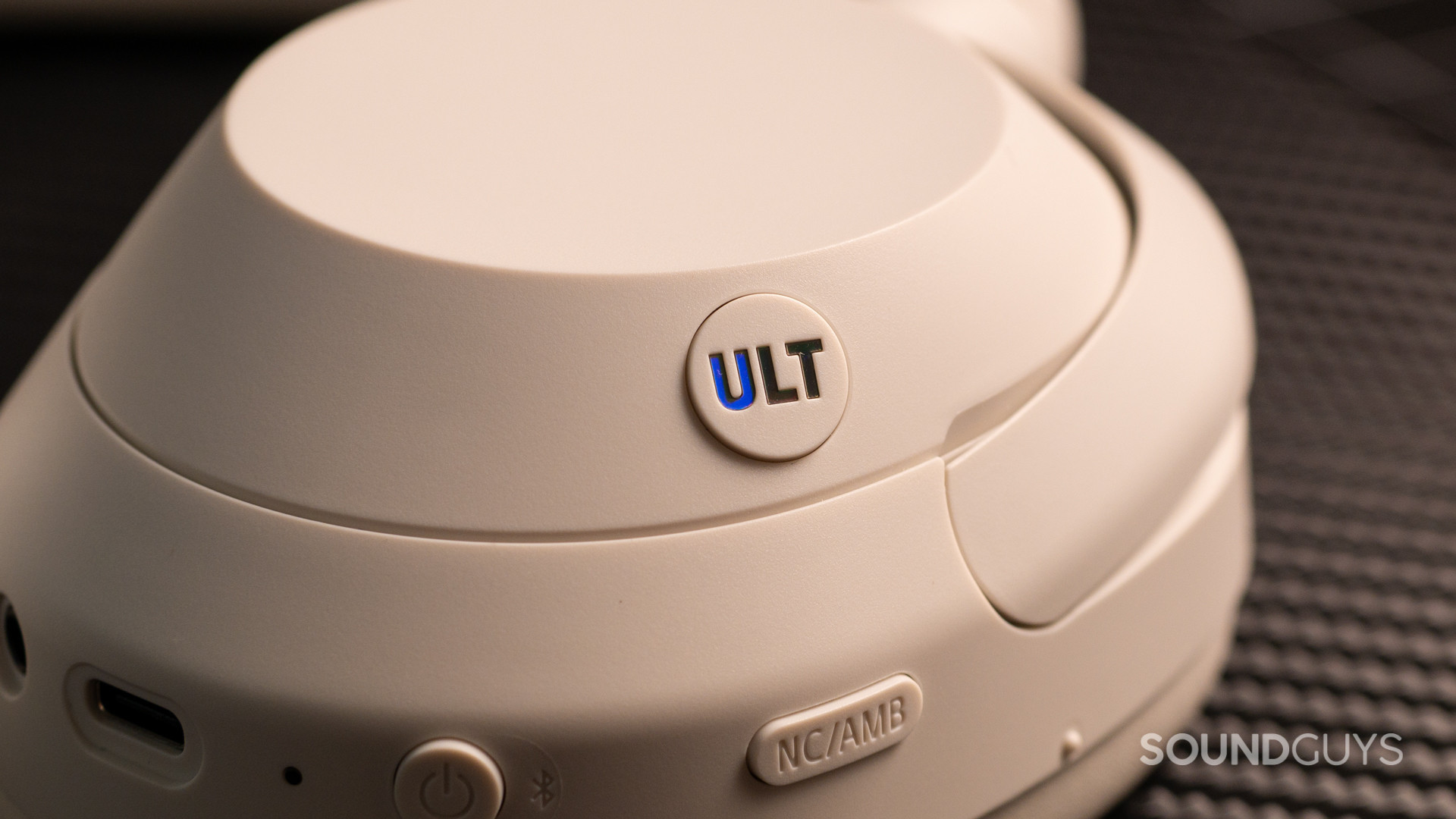
The Sony ULT WEAR headphones deliver overwhelming bass that will appeal exclusively to die-hard bass enthusiasts. Even on the default settings, the bass and sub-bass frequencies are emphasized to a degree that most would consider overpowering. If you want to tone it down a little, you can do so in the Headphones Connect app (thankfully).
But for bassheads, this exaggerated low-end emphasis is likely exactly what they crave. The ULT WEAR takes things even further with dedicated “ULT” bass boost modes. The “ULT 1” setting kicks up everything under 100Hz by around 5dB over the already boosted bass levels, and the “ULT 2” mode takes the sub-bass level off of our metric charts completely.
Loading chart ...
They provide a comfortable fit with larger 40mm ear cups and a well-padded headband, ideal for long listening sessions. Battery life is excellent, at over 32 hours, and they support multipoint Bluetooth connectivity plus wired and fast charging options. Decent active noise cancelation, intuitive touch controls, and a quick ambient-aware mode round out the feature set.

The Skullcandy Crusher ANC 2 are a lot of fun
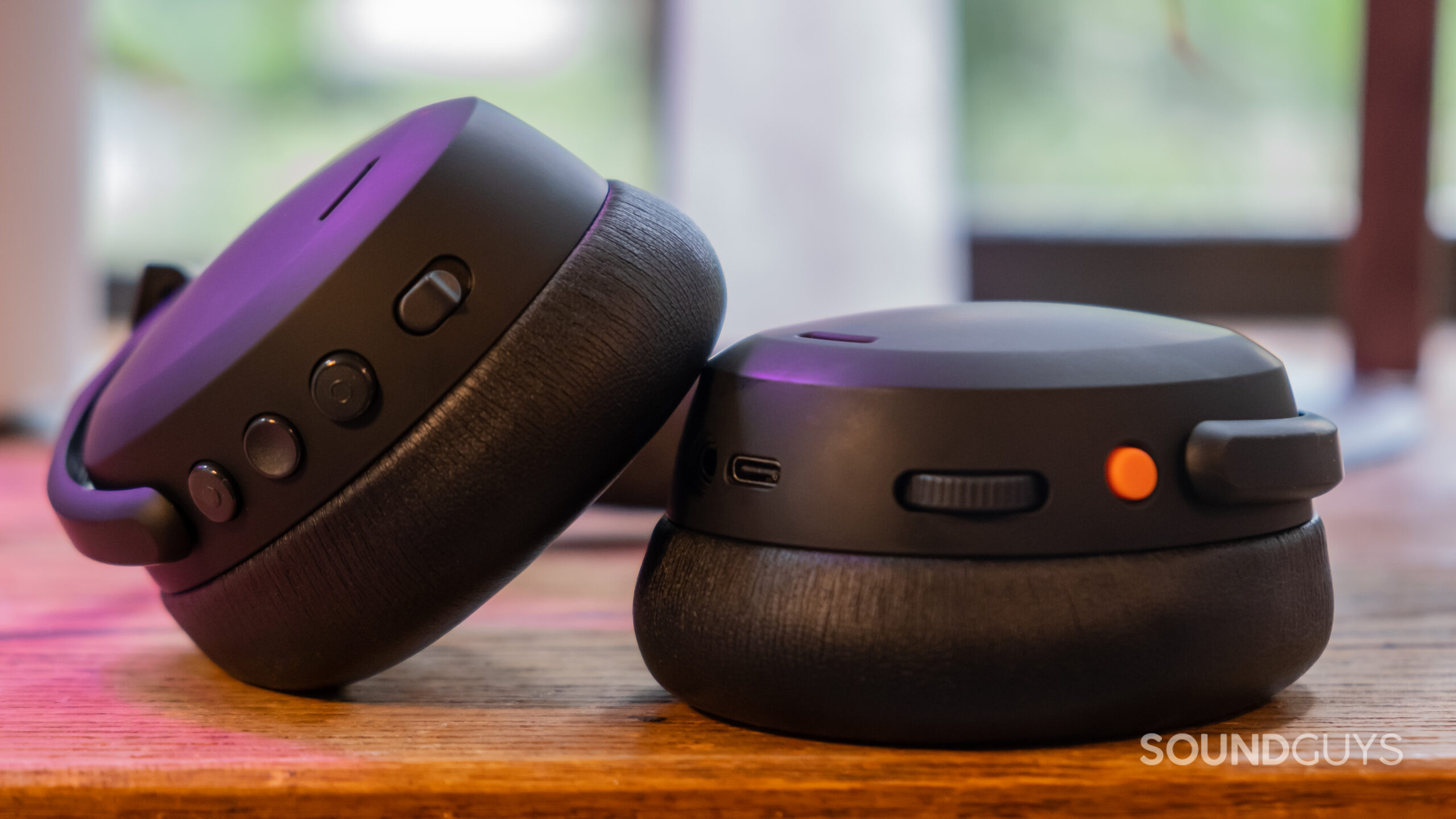
Are you ready to test your resolve to get bassy headphones? The Skullcandy Crusher ANC 2 can tick that box with a dedicated Crusher mode accessible through a dial. It effectively ups the volume of the EQ, peaking at roughly 50Hz, which will rattle your skull. You can dial back the bass or add on to it, so that’s delightful for bass fans.
In addition, you get a highly useful app that allows you to allocate all sorts of controls to the buttons on the Crusher ANC 2. The headphones also feel comfortable to wear for long periods of time. Bluetooth multipoint is another welcomed feature. Otherwise, the headphones are limited to AAC, SBC, and wired connectivity, which does fine for most folks.
Really, the noise canceling on the Crusher ANC 2 is the least impressive feature. It does okay and blocks up to 15dB at 200Hz (which is decent) but is certainly surpassed by other picks out there. Nonetheless, you can eke out 45 hours and 23 minutes of battery life (with ANC), which is quite good.

For the loudest bass, get the Sony WH-XB910N
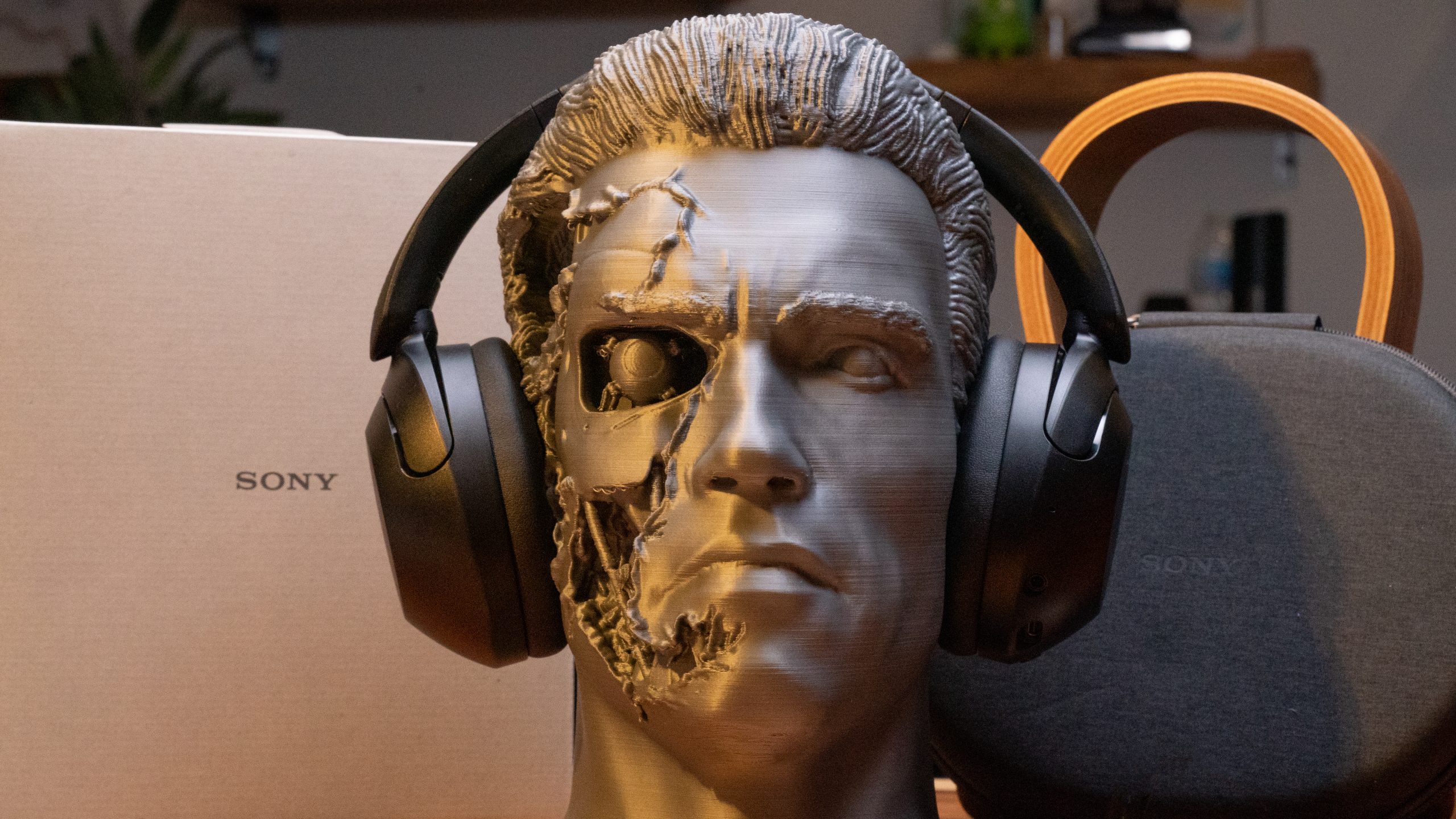
It’s in the name somewhere, right? The “XB” in the Sony WH-XB910N stands for “Extra Bass,” and for anyone who wants the loudest bass output possible, the XB910N is a great pick. Not only do you get an insanely loud bass response, but you also get the option to easily change the sound thanks to Sony’s in-app equalizer. You can either create your own EQ or choose from a few presets. Within the app, you also get access to 360 Reality Audio optimization and Adaptive Sound, which automatically adjusts the volume of certain frequencies depending on environmental noise.
Though the Sony ULT WEAR has superseded these headphones, you can still find them on sale online and in some stores. The good news is that they are now old enough to score some good deals, so if you’re strapped for cash, this might be a good buy.
Loading chart ...
The headphones use Bluetooth 5.2 to connect to your device, and you can choose between three codecs: SBC, AAC, and Sony’s LDAC. Whether you own an iPhone or an Android phone, you’ll be able to listen to high-quality, reliable audio through the XB910N headphones. If the battery dies, you can just plug in with a 3.5mm cable and get back to listening. Speaking of batteries, the XB910N lasts just over 37 hours and supports fast charging. Just 10 minutes of USB-C charging will supply four and a half hours of playtime.
Noise canceling is very good here and similar to that of the older Sony WH-1000XM3, which was very good upon its debut. When you properly fit these bassy headphones, you’ll notice that low frequencies sound one-quarter to one-eighth as loud as they would without the headphones. For the price, you’re getting a feature-packed, bass-heavy headset.

Budget Pick: Anker Soundcore Life Q30
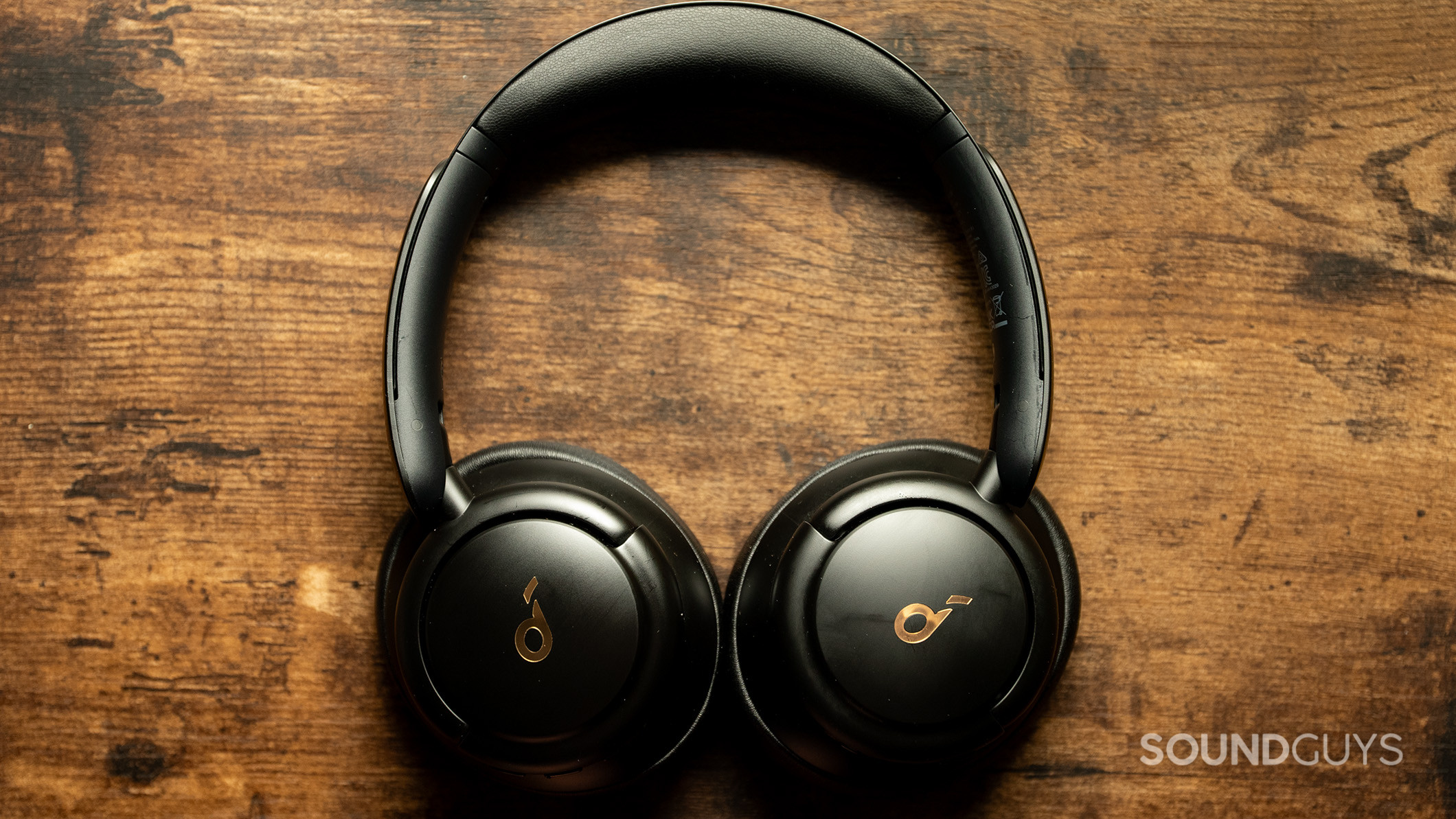
For bassheads on a budget, the Anker Soundcore Life Q30 delivers an impressive low-end punch that defies its price tag. With an absurd amount of emphasis on low frequencies below 200Hz, these headphones naturally produce the kind of booming bass that makes EDM and hip-hop tracks truly thump without any EQ adjustments.
Loading chart ...
Beyond the bass-forward sound signature, the Life Q30 offers a 46+-hour battery life and decent ANC. While audiophiles might find the default tuning overemphasized, the Soundcore app offers EQ customization to fine-tune your bass experience. Comfortable for extended listening sessions and featuring both wired and wireless connectivity options, the Life Q30 stands as our top recommendation for anyone seeking maximum bass impact without breaking the $100 barrier.

The JBL Live 660NC Wireless Headphones cancel noise with oomph
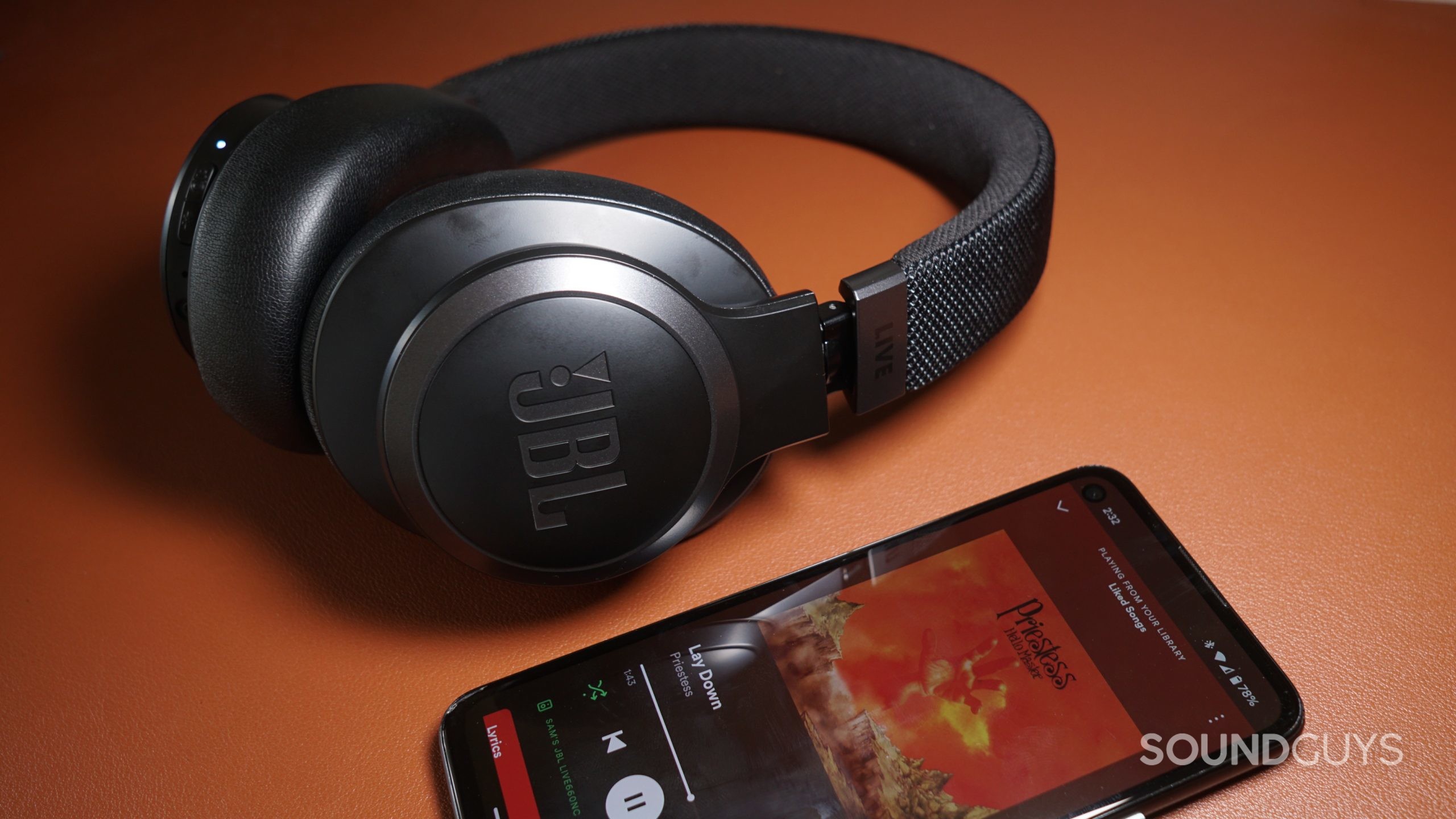
JBL has a storied and rich history of releasing reliable and pretty bassy headphones. The JBL Live 660NC Wireless Headphones come with a decent app, a reasonable amount of low-end volume emphasis, and pretty good noise canceling. Most folks won’t find the mic is great, and the ear cups can fit narrow on some ears. Those issues aside, the Live 660NC are no fuss and straightforward, which is exactly what a lot of people want in headphones.

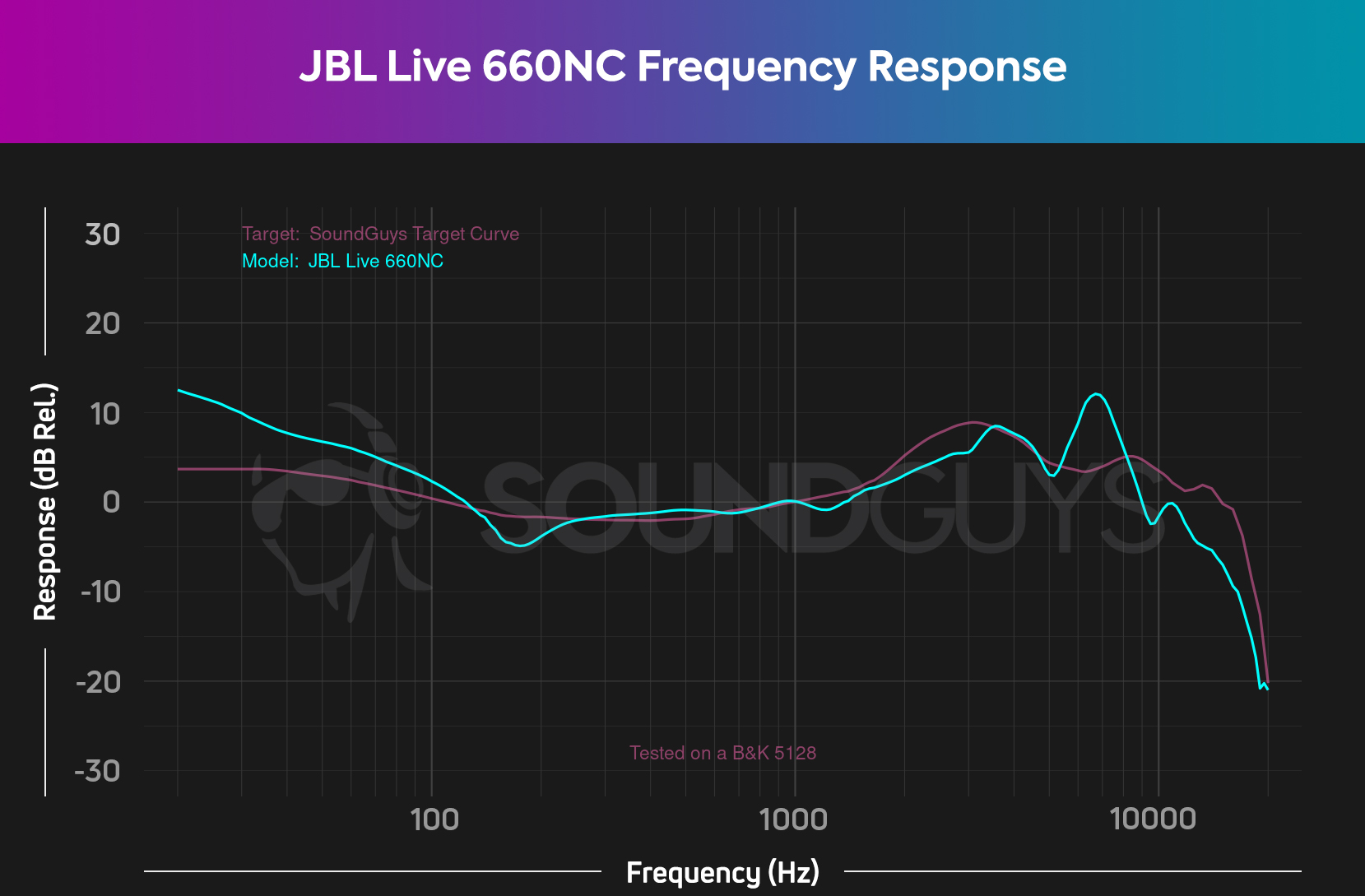
Below 100Hz, the JBL Live 660NC amplifies bass and sub-bass a good deal, but not so much as to overwhelm mids and highs.
The best headphones for bass: Notable mentions
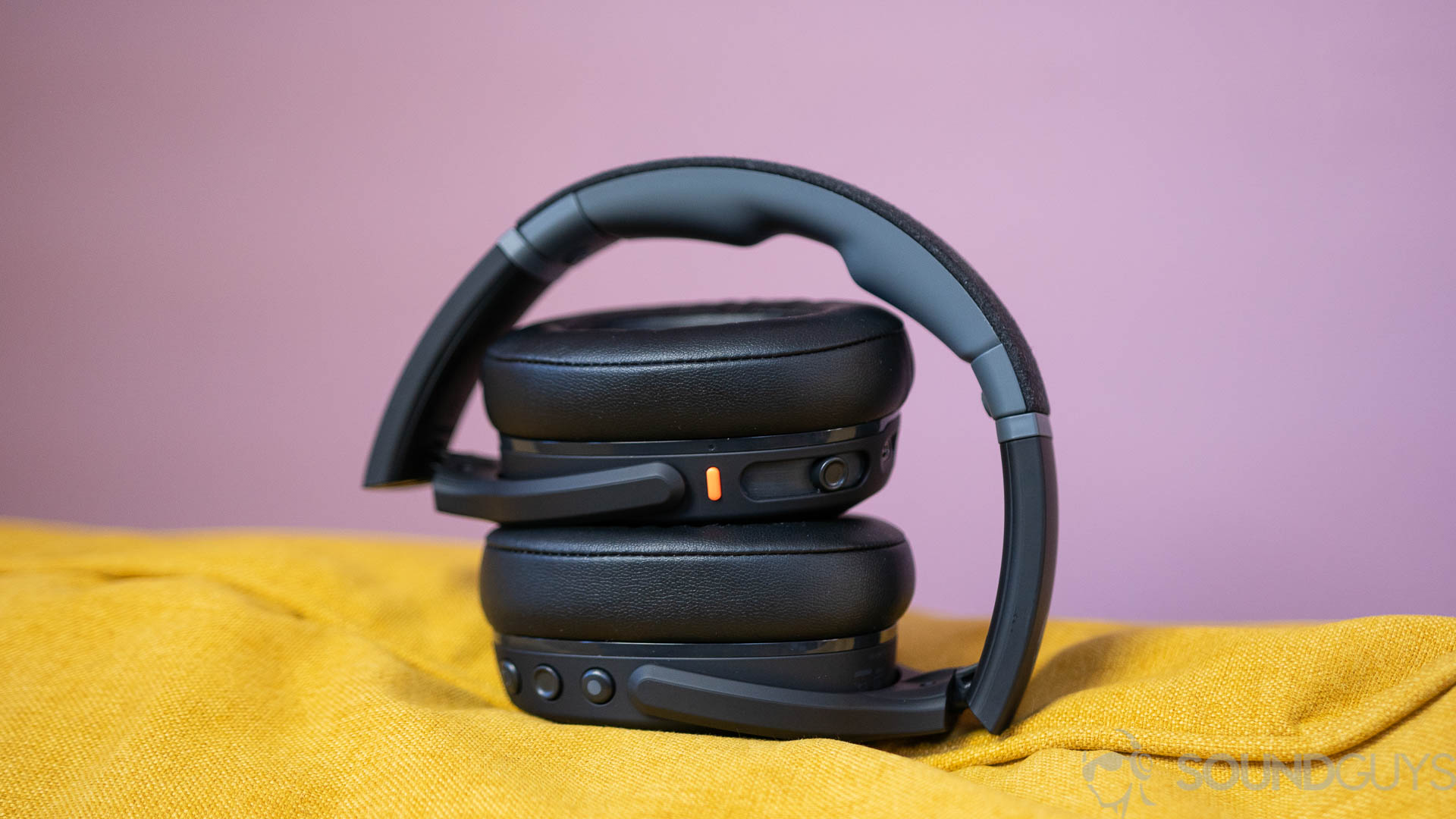
- Anker Soundcore Life Q20 ($59 at Amazon): This is the headset to get if you want barebones, no-nonsense active noise canceling (ANC) on a budget. Sure, the lack of bleeding-edge features and outdated USB port may be a drag, but this headset does very well for the price.
- Audio-Technica ATH-M50xBT2 ($198 at Amazon): If you want a more studio-friendly sound that still boosts bass a tad more than truly “flat” headphones, the ATH-M50xBT2 is a great option. This takes all that we love about the wired M50X and adds Bluetooth capabilities, with a long battery life that makes it more eco-friendly than its other wireless counterparts.
- House of Marley Positive Vibration XL ANC ($142 at Amazon): These eco-friendly ANC-capable headphones have a very exaggerated bass and treble response. For the price, they’re well made, if a bit intense with clamp force for some.
- JBL Tune 510BT ($27.99 at Walmart): These on-ears are budget-friendly and perhaps not the most comfortable, but they provide a good amount of low-end emphasis and work reliably well.
- JLab JBuds Lux ($79.99 at Amazon): As far as inexpensive ANC headphones go, the JLab JBuds Lux ANC are one of the best of 2024. They focus on the fundamentals with a slight bass emphasis.
- Marshall Major IV ($116 at Amazon.): These on-ear headphones are lightweight, comfortable, and feature a unique toggle control. They also have more bass than our ideal, but not an egregious amount. As on-ears go, they feel comfortable but don’t have a ton of luxuries.
- Skull Candy Crusher Evo ($150 at Amazon): The Skullcandy Crusher Evo series provides great sound and all the bass you could want with a dedicated bass slider. It also makes for a great pair of travel-friendly headphones and can compact in seconds, making it easy to toss it into a bag.
- Sony WH-1000XM4 (): This pair of noise canceling headphones from Sony amplifies bass notes to a reasonable degree, and you can really crank it up from the free mobile app (iOS/Android). If you don’t want to splurge on the XM5 headphones, this is a good buy.
What you should know about the best headphones for bass
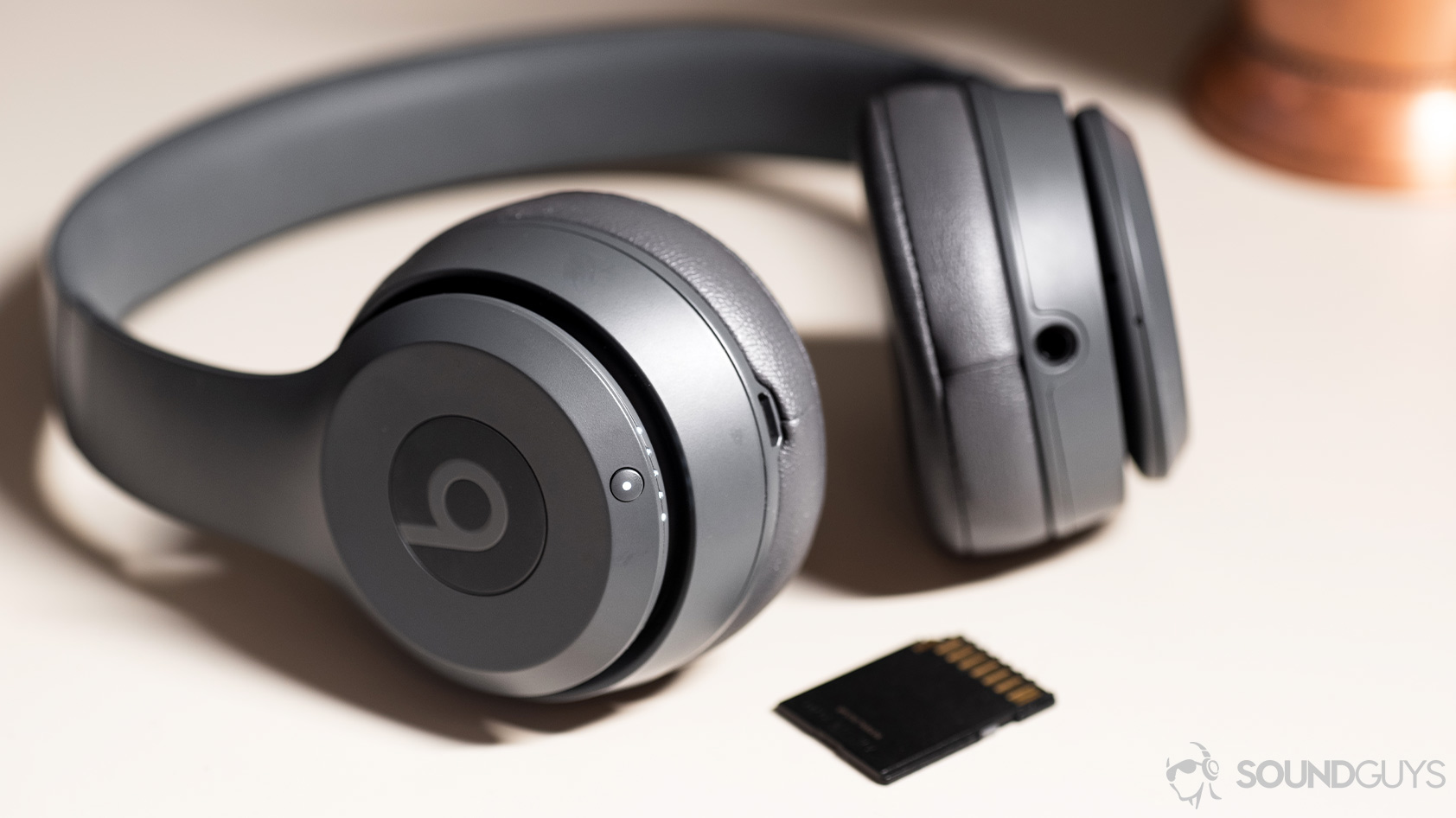
If you’re looking for a pair of bass headphones that are worth spending your money on, then it’s worth knowing a few things so you can really understand what that even means.
What is a bass-heavy frequency response?
When you’re researching headphones, you’ll encounter the term frequency response. The frequency response of an audio product is nothing more than a visual representation of how the output varies with the frequency of the sound being reproduced. The way we test this is straightforward and involves playing back a test signal, recording it, and then comparing it to the input signal.
Loading chart ...
In bass-heavy headphones, low frequencies are reproduced notably louder than the midrange frequencies. This happens because headphone manufacturers intentionally tune them this way. While not everyone likes a heavy dose of bass to their music, many of us do. After all, that’s why you’re here! The drawback to this is that the bass can overpower the midrange notes, making it harder to perceive other instrumental details in your music. It can also produce higher distortion, which will again result in a loss of clarity.
Still not getting enough bass? It could be poor isolation
If you already have a pair of headphones and you’re just not getting enough bass out of them, the problem might not be the headset at all. It could be the fit.
When you have loose-fitting earpads that don’t fit your ears right, outside noise can get in and basically distract your brain from registering those lower notes. This is another example of auditory masking, and it’s just how humans have evolved. If you hear two sounds of similar frequencies, whichever one is louder will be the one that your brain prioritizes as a potential threat. To compensate for this, it’s crucial to make sure that you have a good seal around your ears when listening to music. When you wear in-ear, it’s likewise important to get a good seal at your ear canal entrances.
A set of bass-heavy headphones doesn’t necessarily cause hearing loss, but if you increase the volume too much (on any headphones), you could damage your hearing.
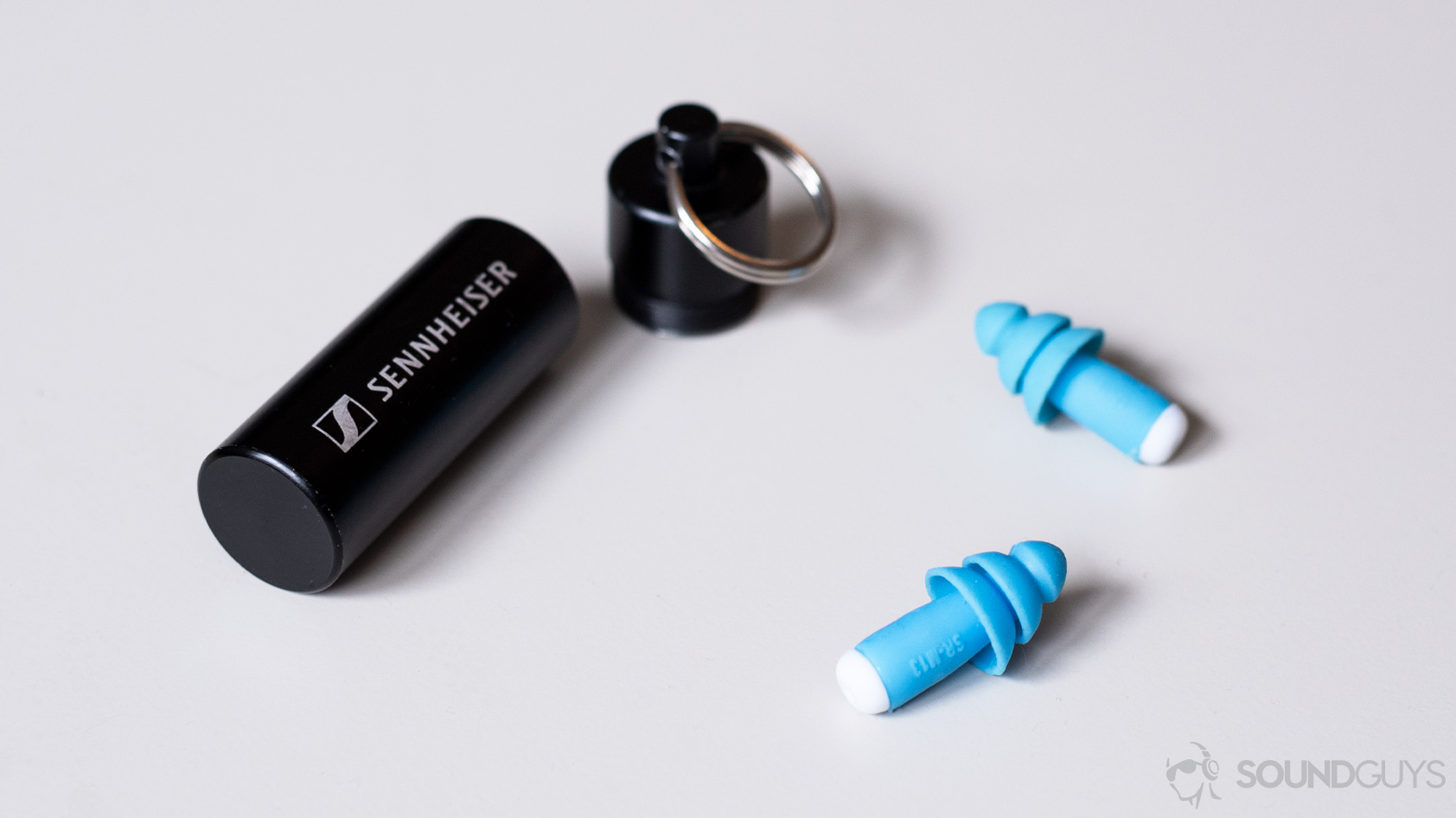
You should be mindful of how loud you’re listening to your music. Exposing your ears to great volume levels for extended (or even short) periods of time can damage the tiny hairs in your ear that are responsible for receiving vibrations. The fewer vibrations they can detect, the less you can hear over time. This is called “noise-induced hearing loss,” and while it’s true that this does happen naturally as you age and people tend to have less sensitivity to higher sounds in old age, why accelerate the process?
You can read all about the different types of hearing loss here, but one thing you can immediately implement into your listening habits is to try to keep your music below 85dB(SPL). Many modern smartphones have volume limiters for this reason, so you can essentially set and forget it for safe listening. That is the maximum exposure recommended by the NIOSH if you like your ears and would like to continue using them into your old age.
Should you get Beats headphones for bass?
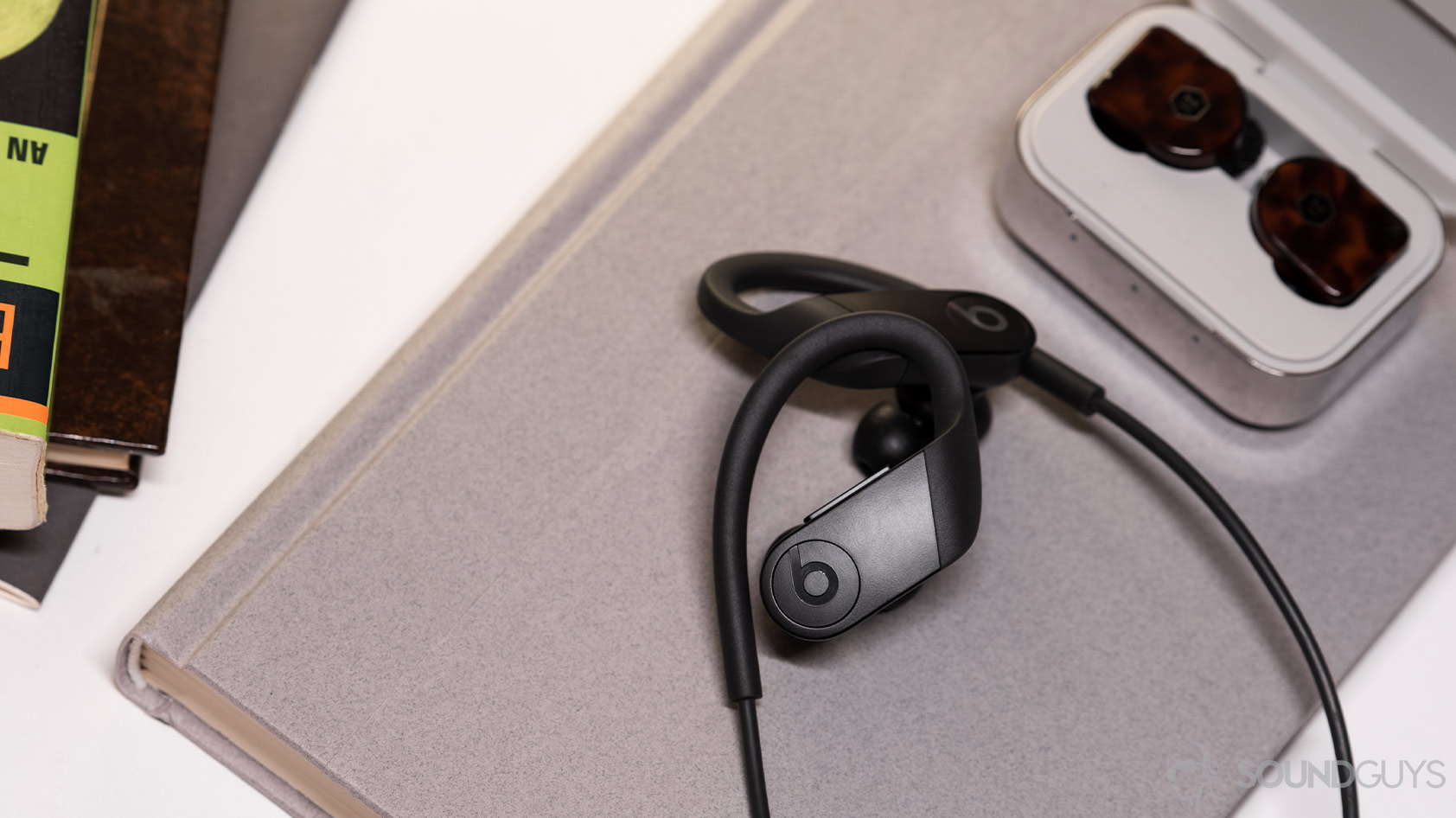
One company is known for its emphasis on the low end, and that’s Beats. While many people scoff at the idea of recommending a pair of Beats headphones, we don’t see a problem with it if a strong bass is what you’re after. Make sure to check out this list of the best Beats headphones before making your decision. If you can’t stand the thought of buying a pair of Beats, then don’t worry because we also have a list of the best alternatives. Whatever you’re after, hopefully, we have you covered with those two lists!
Why you should trust SoundGuys
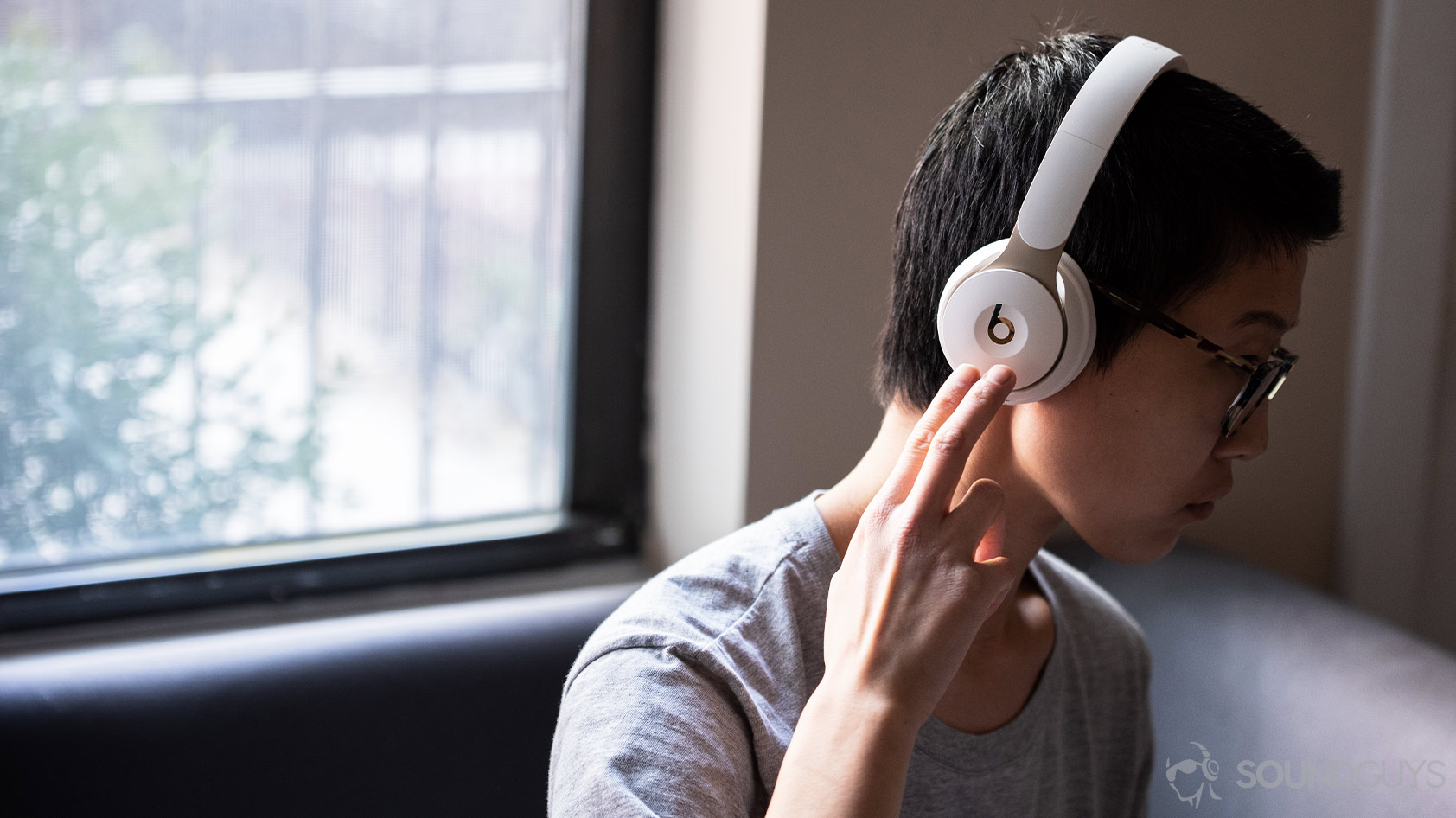
The team at SoundGuys is deeply invested in finding the best audio products on the market and trying to share our passion with the internet. Whether that means interviewing experts on hearing loss or reviewing a bunch of waterproof speakers, we do whatever it takes to get to the truth and inform our readers.
Our team consists of writers with years of experience in radio, product reviews, product testing in the lab, studio production, and, of course, journalism. And if you’re ever worried that we’re being paid to put in a favorable review, don’t worry. Our writers get paid based on output alone (aka how much hard work they put in). Our pay isn’t based on which products get a good review and which don’t.
Frequently asked questions about the best headphones for bass
The Apple AirPods Max was not designed with bass heads in mind. They boost bass a bit, but the bass reproduction is still fairly tame relative to our top picks. There isn’t a way to create a universal custom EQ for the AirPods Max, so that also boots it out of the running for the best headphones for bass.
Depending on what operating system you are using to listen to your music, you will likely need to go into the sound settings on your device.
On an iPhone, for example, under Settings > Music > Playback > EQ, you can select a “Bass Booster.”
Some operating systems allow for personalized equalizer settings, but a preset bass booster is an option on almost all. Additionally, depending on which streaming service you use, you will be offered a varying amount of freedom in changing your equalizing settings within that application. For example, Spotify Premium allows for very personalized EQ settings.
Open-back and closed-back refer to the physical build of a set of headphones. Open backs do not block out room noise nearly as much as closed backs, but open backs deliver a purer sound because there are fewer echoes produced by the sound rebounding off of the headphone walls.
When it comes to choosing between the two types for a bass boost, you’ll want to go with closed-back because the enclosed space amplifies bass tones. However, it can also create tiny echoes or have slower response times because of the high pressure in the chamber behind the drivers. Open-back headphones have a harder time emphasizing bass, but what bass tones they emphasize are almost always more accurate because there’s no force against the driver from the backside.
Regardless of which you choose, there’s always the option to EQ your headphones to boost the bass from the sound source.
Yes, bass-boosted headphones are great for those who enjoy a thumping and powerful low-end in their music. Sound is a personal experience, and whether you’re an audiophile or a bass head, there are headphones tailored to your preference. However, it’s essential to choose headphones that balance the bass boost without overshadowing other frequencies for a listening experience you won’t get tired of.
Absolutely! The Skullcandy Crusher ANC 2, for instance, offers a dedicated Crusher mode that can significantly amplify the bass (but don’t worry, they won’t literally crush your skull). The headphones come with a dial that allows users to adjust the bass intensity, making it a delightful choice for bass enthusiasts.